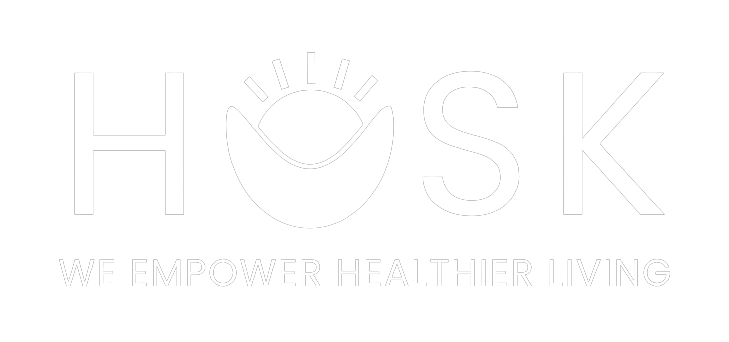
Cholesterol An Overview
What Is Cholesterol?
Your doctor just informed you that you have high cholesterol. You knew this day was coming. Your family members are on medication, your spouse, even your best friend! And now, inevitably, you. What does this all mean? You don’t want to be bogged down taking medication for the rest of your life and wish there was another way. Well, you are in luck, because there is!
But first, before we can treat high cholesterol, it is important to understand what causes it in the first place. Cholesterol is a substance that is naturally produced by your liver to perform everyday functions, such as forming cells, hormones and vitamin D. But, if you accumulate too much cholesterol, it can build up in your blood and potentially lead to cardiovascular disease.
The two most notable forms of Cholesterol are high-density lipoproteins (HDL), the good, and low-density lipoproteins (LDL), the bad. When diagnosed with high cholesterol, it indicates that there is a buildup of cholesterol plaque in your arteries. Think of this as pouring bacon grease down your kitchen sink. It will harden causing your sink to become clogged, mirroring the effects of atherosclerosis. Your cholesterol levels can vary based on the foods you eat, your activity level and your genetics.
Fortunately by increasing your HDL cholesterol, the good, the body is able to carry some of the LDL cholesterol, the bad, that built up in your arteries, back to your liver to be removed from your body. We can alter our HDL to LDL ratio by being mindful of what we eat.
Choose the Right Fats
There are three major forms of fat:
- Trans Fat – Traditionally healthy unsaturated fats that have been modified or hydrogenated to become semi-solid at room temperature mimicking the effects of saturated fats. Some foods that contain trans-fat include margarine, pastries and fast food. As of 2021 the FDA has banned the use of hydrogenated vegetable oils in processed foods.
- Saturated Fat – These fats remain solid at room temperature and are linked to raising LDL levels. Foods such as red meat, dairy, fried food and palm oil are significant sources.
- Unsaturated – Divided up as mono and polyunsaturated fats, also known as omega oils, unsaturated fats have the ability to raise your HDL levels. When looking for unsaturated fats think of Mediterranean foods, fatty fish, nuts, seeds, avocados and olive oil.
When possible, try cooking from home. Dining in provides more control in choosing the right types of oils in your meals. If you do dine out, try opting for fish or chicken rather than a steak or burger.
Add Fiber to Your Meals
Feeling like a healthy chicken salad won’t fill you up? By adding fiber, specifically soluble fiber to your dish you can help reduce cholesterol build up. Not only will soluble fiber slow down your digestion keeping you feeling fuller longer, but it also has the ability to bind to the cholesterol in your intestine and help remove it from your body before it enters the bloodstream. Some examples of soluble fibers include oats, flax, chia, carrots, and citrus fruit.
Watch Your Wasteline
You may have heard losing weight can help lower cholesterol. While this is true, losing weight specifically in your waist can make a significant difference. Studies show that just one inch can make all the difference. If your waist is 35 inches or more for females, or 40 inches or more for males, you run the risk for high cholesterol, high blood pressure, cardiovascular disease and a list of other metabolic problems. Another way to calculate your mid-section is through the use of a metabolic scale. Through biometrical impedance scales, you can calculate your visceral fat which ranges from one to fifty-nine. A visceral score of more than 12 indicates elevated cardiovascular and metabolic health risks.
Stay Active
To ensure an active lifestyle, the American Heart Association recommends getting at least two and a half hours of activity in a week, or if you prefer, 30 minutes of activity five days a week. This could include activities such as going for a brisk walk, tending to the lawn or swimming. If you participate in more vigorous activities such as running or Zumba, the recommendation drops to 75 minutes a week. By maintaining an active lifestyle, on average, the body is able to lower the LDL cholesterol by 15% after just 3-6 month of regular exercise.
Stress Less
When under mental stress, the body releases a hormone called cortisol triggering the fight or flight response. When reacting with a sympathetic response, not only may we not make healthy food choices, but to keep up our high energy levels, the body releases stored glucose into the bloodstream which in turn triggers insulin response. As a hormone, insulin also is responsible for the activation of the cholesterol biosynthesis (creation) enzyme and LDL production. To learn more about ways to reduce your cortisol level check out our post, “Does this Stress Make Me Look Fat?” at the link below.
By making any of these changes, you’ll be on your way in no time to improving your cardiovascular health. If it seems intimidating it’s best to start with one change at a time. And don’t forget, working with a Registered Dietitian can help provide you with motivation and advice to help you hit your goals.
By Veronica Campbell RD, LDN
Veronica Campbell is a Registered Dietitian in the states New Jersey, North Carolina, Pennsylvania, South Carolina and Tennessee.
Mental Health
Marketplace
Nutrition
Physical Therapy
Rewards
HUSK Pro
Company
About
Contact
Press
Blog

